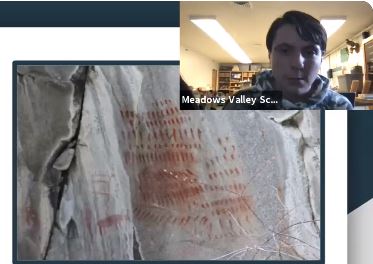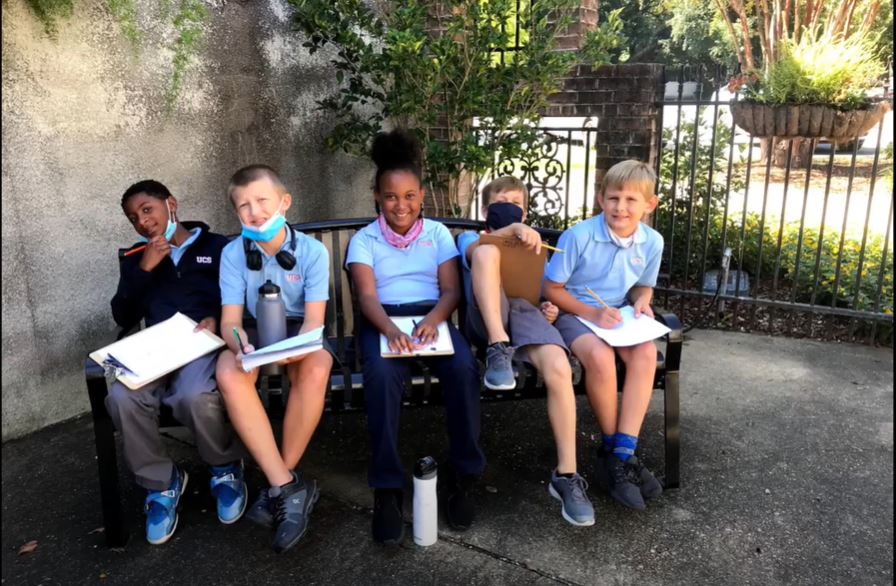“I think we don’t know ourselves until we know the world around us and how we connect to that world.”
-Laura Haspela, educator
Student-centered learning
Adopting a learner-centered approach is a core principle of place-based education. As described in the book The Power of Place, “In learner-centered environments, students see themselves in the learning, and facilitators are able to design experiences with and for each student.” A powerful test of how this key principle plays out is hearing directly from the learners. At last month’s annual conference for schools participating in TSS’ Place Network, educators and school leaders had a chance to do just that. We invite you into the joy of hearing students share their stories of transformative learning.
Using Place to Understand Energy Flow and Build a Better Bird House
Fourth-grade students from University Charter School in Livingston, Alabama took on a video editing project to tell the stories of student work from the first, fourth, and eighth grade classes. Their four-minute video elegantly presents projects that tackled challenging tasks like creating working models of energy transformation based on local buildings and constructing bird feeders out of recycled materials designed to attract and support local native birds. Enjoy!

A More Sustainable Midwest Fire Fest
High school sophomore Adeline Gent from Koshkonong Trails in Cambridge, Wisconsin delivered a compelling presentation on her work through an independent student project to increase sustainability. The goal of the project was to reduce waste created at a local festival that celebrates art forms connected to the element of fire (e.g. metalwork, pottery, glassblowing, and fire dancing). Over years of attending the event, Adeline grew increasingly aware of the large amount of waste generated by the festival and decided to do something about it.

Here is her story. “I brainstormed some ideas about ways we could reduce our reliance on plastic water bottles at Fire Fest. I started working with the festival’s President and we figured out a way to design an aluminum water bottle and we found a local company to make them. The great part was that we found a way to purchase the bottles and sell them at or near the same cost as a plastic water bottle.”
“From there we started looking at other detrimental effects that Fire Fest might have. We reached out to every food truck that participates in the festival and unless they agreed to stop using styrofoam containers and sell plastic water bottles, they couldn’t join us at the festival. We also worked with the local Girl Scout troop to design posters that will eventually be on every garbage and recycling can to inform people what can and can’t be recycled and the effects of things that can’t be recycled. Even though we haven’t been able to execute our plans yet, because we finished designing it in early 2020, eventually we’ll be able to see direct effects of what we’ve done. I’m super excited to see how this will impact my community.”
Powerful Learning in the Idaho Wilderness
High school students from Meadows Valley School in New Meadows, Idaho shared about a big adventure they had this spring on their extended science field trip in the Frank Church-River of No Return Wilderness.

“On our science trip, we learned about the Wilderness Act, ‘where man himself is a visitor who does not remain.’ The Frank Church-River of No Return Wilderness is the largest contiguous wilderness in the lower 48. This trip started on April 12th and ended April 20th and we backpacked a total of 52 miles. Throughout our trip, we learned about topography and how to use maps. We also learned about watersheds and hiked through the Big Creek watershed.”
“On day five and day seven, we came across the Tukudeka petroglyphs and one of their campsites. These are cave paintings that they’ve made. We think that some depict how many big-horned sheep they killed, or the number of other things they may have hunted. The reason that they disappeared is that the U.S. army engaged them in the ‘Sheepeater Campaign’ in 1879. These native people lived in pit houses and we saw a couple of those where we stayed on day seven.”

“On the seventh day, we learned about the life cycle of salmon…Once they become an adult, they stay in the ocean for about 3-5 years and then they decide to head back to the river they came from. They do this by remembering the scent of their river. Sometimes, if the salmon don’t choose to go back, or if they think something else smells better, they’ll go to a different river and that’s how you get biodiversity in rivers. One thing that limits the salmon returning to their rivers are dams, like the Snake River dams.”

We are full of gratitude for all the students and teachers behind these stories, and many others like them. Their openness to challenge themselves and make a positive impact on their communities inspires us to keep up the good work of place-based education.
Learn more about the Place Network


